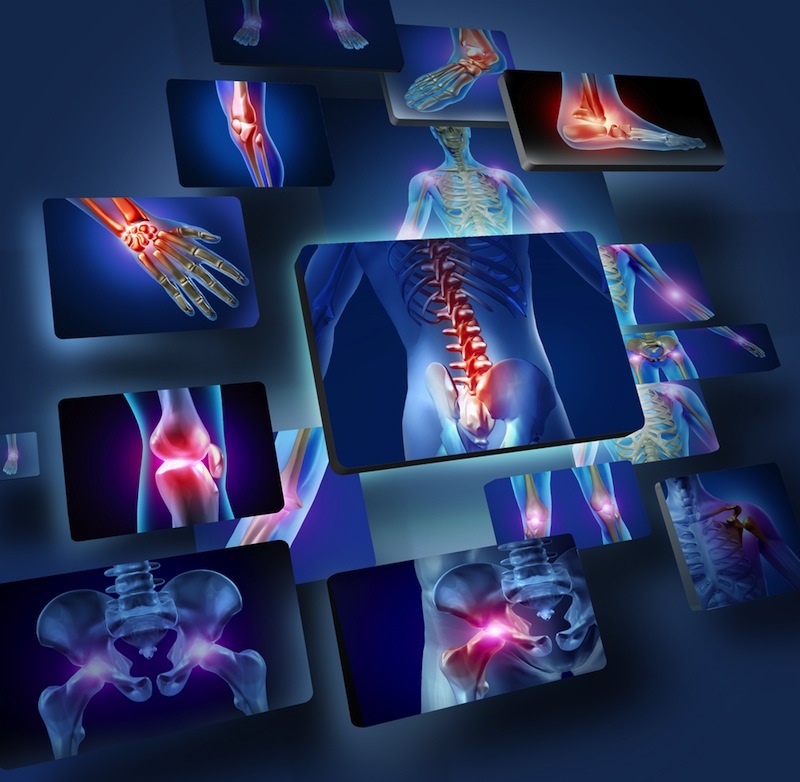Know Thyself Better: 10 Little-Known Body Parts

The human body is full of mysteries. Although our organs and systems have long been the subject of analysis and even dissection by eager researchers — some of whom went as far as stealing corpses to advance our knowledge of exactly what is in the body — there are still parts that seem to reside in uncharted territory. Some of our body parts are vital, but others are seemingly or truly useless. Still others lie somewhere in between, or just don't get that much attention. Here's a look at 10 parts of your body you may not have considered lately.
Something in the knee
The human body is so sophisticated that even after centuries of dissecting humans, scientists continue to discover new parts.
In November, Belgian researchers described for the first time a ligament in the human knee, termed the anterolateral ligament, or ALL. A French surgeon first postulated the existence of this ligament in 1879, but it hadn't been proved until now.
The discovery can shed light on some of the injuries to the knee, in which a patient's knee gives way when it is moved a certain way, the researchers said. [The 7 Biggest Mysteries of the Human Body]
Dua's layer
In another surprising discovery of a new body part, researchers found a previously unknown layer in the human eye.
Sign up for the Live Science daily newsletter now
Get the world’s most fascinating discoveries delivered straight to your inbox.
This thin, tough structure, dubbed Dua's layer after its discoverer, is just 15 microns, or one-millionth of a meter thick, and sits behind the cornea.
The discovery of this layer will help researchers better understand some diseases of the eye that may be caused by a tear or an injury in this layer, the researchers said.
Extra ribs
People normally have 12 ribs on each side, but some people have an extra rib, which can cause health issues. The additional rib is called a cervical rib, and is found in 0.05 to 3 percent of people, studies have estimated. This rib grows from the base of the neck just above the collarbone, and sometime is not fully formed, instead being made of just a thin strand of tissue fibers.
The extra rib can cause health problems if it squashes nearby blood vessels or nerves. This results in a condition known as thoracic outlet syndrome, which is marked by pain in the shoulder or neck, loss of limb feeling and blood clots.
Ear-wiggling muscles
Cats, dogs and some lucky people are able to wiggle their ears, using a group of muscles called auriculares. This group includes the auricularis anterior, which draws the ear forward; the auricularis superior, which raises it; and the auricularis posterior, which pulls it backward.
Although we all have these muscles, it is thought that only some 15 percent of the population is able to use them to wiggle their ears. It was likely a useful skill back in the day when earlier humans needed to turn their ears toward the direction of an alarming sound. But today, it's mostly used for fun.
The cuticles
Cuticles are the layer of hard skin at the bottom of the nails, where the nails and fingers meet. Underneath the cuticle, new nails are forming. Almost invisible, these little body parts prevent bacteria and dirt from entering the body.
The floating hyoid bone
Found only in humans, the hyoid bone is the only bone in the body that is not connected to any other, and is the foundation of speech.
This horseshoe-shaped bone in the throat is situated between the chin and the thyroid cartilage. Because of its location, the bone works with the larynx (voice box) and tongue to produce the range of human vocalizations.
The tailbone
The tailbone, or the coccyx, forms from the fusion of vertebrae, and is leftover from a tail that other mammals still have.
It has been suggested that the coccyx helps to anchor minor muscles and may support pelvic organs. However, there have been many medical cases where the tailbone has been surgically removed with no negative consequences.
Some medical cases describe babies who are born with an extended version of the tailbone. Today, the unusual tail-like extension can be taken care of surgically, but in the Dark Ages, the condition was believed to be a sign of a connection to the devil, and both mother and the child would have been executed.
Vanishing bones
The human skeletal system is full of wonders. Consider this: Adults have fewer bones than a baby. We start life with 350 bones, but because some bones fuse together during growth, we end up with only 206 as adults.
Regenerating stomach
It can get a bit philosophical, but one could argue that we get a new stomach every three to four days. That's because the lining of our stomach is continually replaced by new cells. In fact, the stomach constantly builds new layers so that the organ doesn't get digested by its own acid.
The philtrum
The philtrum, also called medial cleft, is the vertical groove in the middle area of the upper lip. In some animals, it may have improved the sense of smell by keeping the area around the nose wet, but in humans, the philtrum has no apparent function.
It is possible that because humans rely on vision more than any other sense, the philtrum has lost is functionality, and is there only as an evolutionary leftover.
However, scientists are still interested in this little body part because it is formed during specific embryonic ages, and an unusual form of the upper lip area is a clue to disruptions during the development of the fetus. Variations in the philtrum have been studied in certain diseases and is even linked to autism spectrum disorders.
Email Bahar Gholipour. Follow us @LiveScience, Facebook & Google+. Original article on Live Science.










